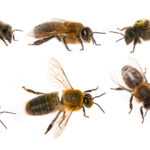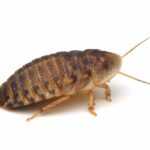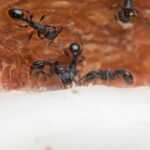The Jumping Spider Bite: Symptoms and Treatment Options
Jumping Spider Bite Symptoms and Care
Concerned about being bitten by a jumping spider? Jumping spiders rarely bite humans and usually only do so if they feel threatened. Typically, jumping spider bites are not serious and cause symptoms such as redness or itching, and they are not dangerous to humans. Most bites do not pose a threat. This guide will help you recognize jumping spider bites, provide treatment options, and advise when to seek medical attention.
Common Symptoms and Signs
Jumping spiders bite humans only rarely, and when they do, the reactions are usually similar to other minor insect bites, including slight swelling, redness, and itching. These symptoms often resemble those of a mosquito bite, with the bite area showing a bump and color changes. The pain from a jumping spider bite is generally mild and much less severe than a bee sting. Most symptoms resolve within a few hours with simple first aid measures.
Rarely, jumping spider bites can cause allergic reactions such as dizziness or nausea. In sensitive individuals, venom can cause noticeable swelling, expanding redness, and difficulty breathing. Severe allergic reactions may include hives, swelling, and trouble breathing, requiring immediate emergency medical attention.
First Aid and Treatment for Jumping Spider Bite
If bitten by a jumping spider, start by cleansing the area with soap and water to prevent infection. Jumping spiders produce venom to subdue their prey, but their venom is not dangerous to humans. Apply a cool compress or cold compress to reduce swelling and inflammation, providing relief. Over-the-counter pain medications and creams can help alleviate discomfort and reduce the risk of infection.
Most jumping spider bites can be treated at home. If severe symptoms, such as difficulty breathing, increased pain, or swelling occur, seek medical care immediately.
Home Remedies and Care
If you’ve been bitten by a jumping spider, there are several effective home remedies to help manage the symptoms and promote healing. Start by gently washing the bite area with mild soap and water to prevent infection. Applying a cool compress or a cold pack wrapped in a cloth can help reduce swelling and soothe any discomfort. Over-the-counter pain relievers like acetaminophen or ibuprofen can ease minor pain and inflammation, while antihistamines such as diphenhydramine may help relieve itching. Keep an eye on the bite area for any changes, such as increased redness, swelling, or the presence of pus. If you notice any of these signs or if symptoms worsen, seek medical attention promptly to ensure proper care.
Medical Treatment Options
In rare situations, jumping spider bites can become infected, leading to more severe symptoms that require medical intervention. If you observe increased swelling, redness, or pus around the bite area, it’s important to seek medical attention as soon as possible. A healthcare provider may prescribe antibiotics to treat the infection and prevent it from spreading. Be sure to follow the full course of antibiotics as directed, even if symptoms improve before the medication is finished. Keeping the bite area clean and applying any topical creams or ointments recommended by your doctor can further support healing. Prompt treatment of infected spider bites helps reduce the risk of complications and ensures a quicker recovery.
When to Seek Medical Attention
Seek professional medical advice if you experience:
- Severe or worsening symptoms
- Increased swelling or redness lasting more than a day or two
- Breathing difficulties or other signs of an allergic reaction
The type of spider responsible for the bite can affect how severe your symptoms are and how urgently you need medical attention.
Early recognition and prompt treatment can prevent complications.
Understanding Jumping Spiders and Their Venom
Jumping spiders belong to the family Salticidae, known for their jumping skills and keen eyesight. Unlike spiders that build webs to catch prey, these agile hunters can leap several times their body length to ambush insects and even other spiders.
There are many species of jumping spiders worldwide, making them one of the most diverse spider species. With about 4,000 species in the family Salticidae, including approximately 300 in the United States, jumping spiders display a wide range of colors and patterns. Some of the most common jumping spiders found in North America include the daring jumping spider, the bold jumping spider (Phidippus audax), and Habronattus species. They have eight eyes arranged in two rows, supporting their excellent vision. Some species are brightly colored, with iridescent markings that can be blue or green.
Adult jumping spiders typically measure between 4 to 20 millimeters in body length. Males often display brighter hues compared to the more monochromatic females. They may exhibit a defensive posture by raising their front legs and leaping when threatened.
Identifying the Culprit: Jumping Spider and Similar Spider Species
Recognizing the jumping spider that bit you can be helpful for peace of mind and proper care. Jumping spiders, including the daring jumping spider and the bold jumping spider, are part of the Salticidae family—the largest family of spiders. These spiders are easily identified by their compact bodies, bright or contrasting colors, and distinctive pale markings. Adult jumping spiders have eight eyes, with the two large front eyes giving them excellent vision for hunting. Unlike other spiders that build webs to catch prey, jumping spiders rely on their agility and keen eyesight to stalk and leap onto insects. If you spot a small, active spider with a tendency to jump and vivid markings, you’re likely looking at a member of this fascinating family.
It is important to distinguish jumping spiders from other spider species such as wolf spiders, orchard spiders, and violin spiders, which may have different behaviors and venom effects.
Habitat and Behavior of Jumping Spiders
Jumping spiders thrive in areas with abundant insects, such as fields, gardens, backyards, and places with many plants. Jumping spiders live primarily outdoors in environments like grasslands and woodlands, but they may also be found indoors near entrances, window molding, and door frames where insects enter.
They build web retreats in concealed locations like crevices, beneath tree bark, or under furniture. These web retreats are not used to catch prey but serve as resting places during molting, hibernation, and laying eggs. Jumping spiders lay eggs in silk egg sacs found within these retreats, indicating breeding sites.
Prevention Tips to Avoid Jumping Spider Bites
To prevent jumping spider bites:
- Seal openings around windows and doors to keep spiders out
- Keep your living space tidy and organized to eliminate hiding spots
- Reduce lighting to lower the number of insects that attract spiders
- Use a vacuum cleaner to safely remove any spiders indoors; after vacuuming, dispose of the vacuum bag outside to prevent re-entry
- For more information on protecting your home from pests, including preventing bed bug infestations, visit our detailed guide.
Consulting a professional pest control service can be helpful in managing severe infestations.
Repelling Jumping Spiders
Keeping jumping spiders out of your home and garden involves a few simple strategies. Since jumping spiders are attracted to areas with plenty of insects, reducing the insect population around your property is key. Seal any cracks or gaps around windows, doors, and walls to prevent spiders from finding their way inside. Regular cleaning and vacuuming, especially in corners and along window sills, can help remove spiders and their potential hiding spots. Trimming vegetation and removing clutter near your home’s foundation also makes your property less inviting to these agile hunters. If you’re dealing with a large number of spiders or persistent issues, consider reaching out to a professional pest control service for safe and effective management. Remember, most spiders, including jumping spiders, are beneficial because they eat insects, so only take action if they become a significant nuisance.
Distinguishing Jumping Spiders from Dangerous Spiders Like Black Widow and Brown Recluse
While jumping spiders are generally harmless, it is important to distinguish them from dangerous spiders like the black widow spider and the brown recluse spider, which pose significant health risks. Black widow spider bites can cause immediate sharp pain, numbness, muscle cramps, and in severe cases, more serious health issues that may require hospitalization. Black widows are sometimes mistaken for jumping spiders due to their size, but they are much more dangerous and have a distinctive shiny black body with a red hourglass marking. The brown recluse spider bite is often initially painless or subtle, with symptoms such as pain, skin ulcers, or changes developing hours after the bite occurs, along with possible systemic symptoms like fever and joint pain.
Managing Jumping Spider Bites Safely
Jumping spider bites are usually mild and manageable with basic first aid. Recognizing the symptoms, knowing when to seek medical attention, and taking preventive measures can help you coexist safely with these helpful arachnids. For severe infestations or concerns, professional pest control services are recommended.
Frequently Asked Questions
Are jumping spiders poisonous to humans?
Jumping spiders produce venom to subdue their prey, but their venom is not poisonous or dangerous to humans. Bites are typically mild and cause minor symptoms.
How can I tell if a spider bite is from a jumping spider?
Jumping spider bites usually resemble mosquito bites with redness, swelling, and mild itching. Identifying the spider by its compact body, bright markings, and jumping behavior can help confirm.
Can jumping spider bites cause allergic reactions?
While rare, some individuals may experience allergic reactions such as swelling, hives, dizziness, or difficulty breathing. Severe reactions require immediate medical attention.
How do I treat a jumping spider bite at home?
Clean the bite area with soap and water, apply a cold compress, and use over-the-counter pain relievers or antihistamines as needed. Monitor for signs of infection or worsening symptoms.
When should I see a doctor for a jumping spider bite?
Seek medical care if symptoms worsen, if there is increased swelling or redness, signs of infection, or if you experience difficulty breathing or other allergic symptoms.




